The Role of Artificial Intelligence in Modern Cybersecurity Strategies
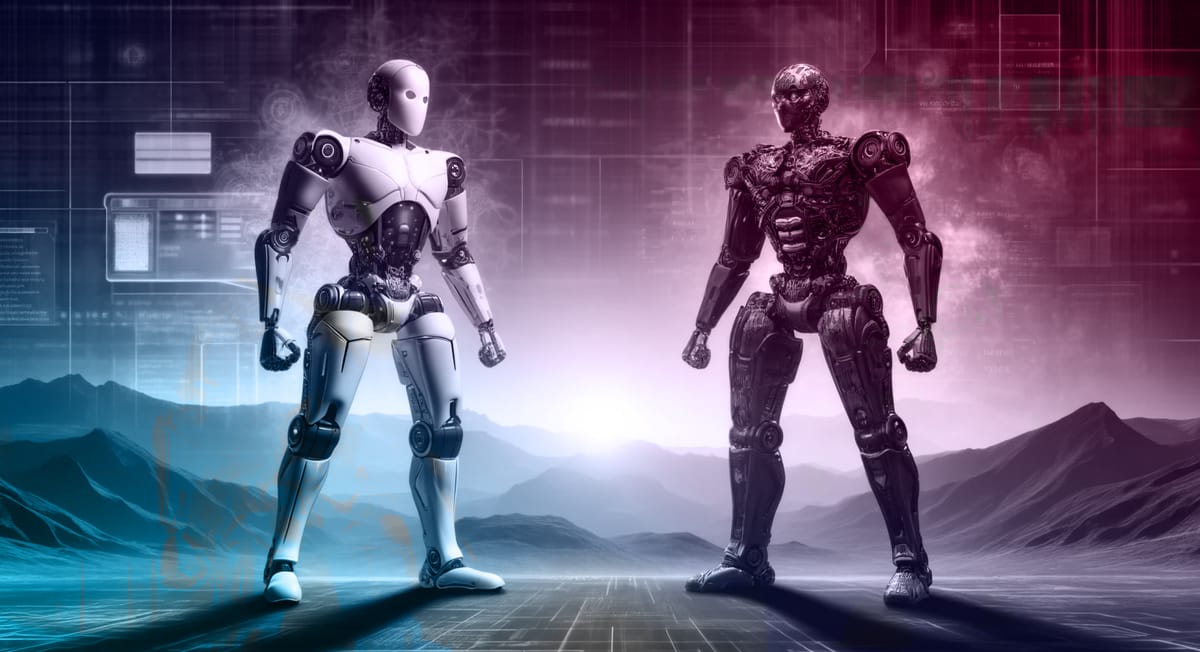
The AI revolution is underway, and while it's hard to predict the exact forms it will take, it’s evident to anyone working in the tech industry that this is an unstoppable force. In the realm of cybersecurity, which has always been a cat-and-mouse game, AI is set to accelerate the pace even further:
Cybercriminals are using Dark AI to execute a range of sophisticated attacks, including data poisoning and deepfakes, and deploying fully autonomous botnets and malware that can adapt and evolve to avoid detection by traditional security systems.
In response, cybersecurity organizations are slowly but increasingly adopting AI to identify suspicious activity and automatically prevent or mitigate those attacks.
As cyberattacks become more sophisticated, the use of AI for security purposes is no longer a luxury, but a necessity. In this blog post, we look at the significant role AI plays in improving cybersecurity and explore its benefits, challenges, and future trends.
What is AI?
Artificial Intelligence is the science of creating machines that simulate human intelligence, with the goal of enabling these systems to analyze, learn, and perform tasks that traditionally required human intervention. This technology has the potential to not only match, but exceed human capabilities in certain areas.

AI systems achieve their powerful capabilities by analyzing vast amounts of data to uncover patterns and insights that guide their decision-making processes. By capitalizing on this data-driven approach, AI can optimize outcomes and solve complex problems with striking efficiency.
In today's digital age, AI is woven into the fabric of our everyday lives. Whether it's the navigation system in your car, the voice-activated assistants in our homes or the predictive text on your smartphone, AI technology is constantly improving our experiences. Quite often, without us even realizing it.
For those interested in learning more about the world of AI, we recommend our blog posts on A Brief History of AI and Understanding the Differences between AI, Machine Learning, and Deep Learning.
A New Era of Cyber Defense
AI is revolutionizing virtually every industry, and its most significant impact is being felt in those places where there are vast amounts of complex data. Cybersecurity, which is inherently data-driven, stands to benefit massively from AI's capabilities. The volume and complexity of data in cybersecurity, from network traffic and emails to executable files and live phone calls, requires real-time analysis that exceeds human capabilities.
AI's advanced pattern recognition capabilities make it a game changer in cybersecurity. For example, AI can identify unusual patterns in network traffic that may signal a cyberattack. In addition, AI-powered tools can analyze user behavior to detect anomalies that indicate potential breaches, enabling organizations to respond quickly and proactively.
To fully understand the intersection of AI and cybersecurity, it's important to explore the core AI-related components that drive modern cybersecurity tools and strategies:
- Machine Learning (ML): A subset of artificial intelligence that enables systems to automatically learn and improve from experience by being trained on data.
- Natural Language Processing (NLP): Enables computers to understand, interpret, and generate human language by analyzing and training large linguistic datasets.
- Data Mining: The process of discovering patterns, correlations, and insights from large data sets using statistical, computational, and machine learning techniques.
- Prediction Models: Mathematical techniques that use historical data and statistical methods to predict future events or trends.
- Anomaly Detection Models: Identifies outliers in data that indicate potential errors, irregularities, or new behaviors.
- Decision-Making Algorithms: Assist in determining the most appropriate decisions by evaluating various options and their potential outcomes. They can be fast and automated.
The combination of these technologies and methodologies, along with adaptive fine-tuning based on real-world data, has led to the development of effective cybersecurity solutions, many of which are currently deployed in a variety of enterprise environments. Among the most widely used are:

AI-Driven Threat Detection
- One of the most powerful applications of AI in cybersecurity is its ability to detect threats in real time. Traditional security systems often struggle to keep up with the sheer volume of data and complexity of modern attacks.
- AI, with its advanced pattern recognition capabilities, can identify anomalies in network traffic and analyze entity behavior to flag potential cyberattacks.
- For example, AI-powered tools can analyze user behavior and detect anomalies that indicate a potential breach, allowing organizations to respond quickly and proactively.
Automated Responses and Mitigation
- AI not only detects threats, but also automates responses to mitigate them. This automation is critical to reducing the time between threat detection and response, minimizing potential damage.
- AI systems can isolate affected systems, block malicious traffic, and even roll back malicious changes on their own.
- This capability significantly reduces the burden on human security teams, allowing them to focus on more complex and strategic tasks.
AI in Predictive Analytics
- Predictive analytics is another area where AI excels, providing foresight into potential cyber threats before they occur.
- By analyzing historical data and identifying patterns, AI can predict future attacks and help organizations prepare in advance.
- For example, AI models can predict the likelihood of certain types of attacks based on current trends and emerging threats, enabling proactive defenses.
As AI continues to advance, its role in cybersecurity will only grow, making it an indispensable tool in the ongoing fight against cyber threats.
The Rise of Dark AI
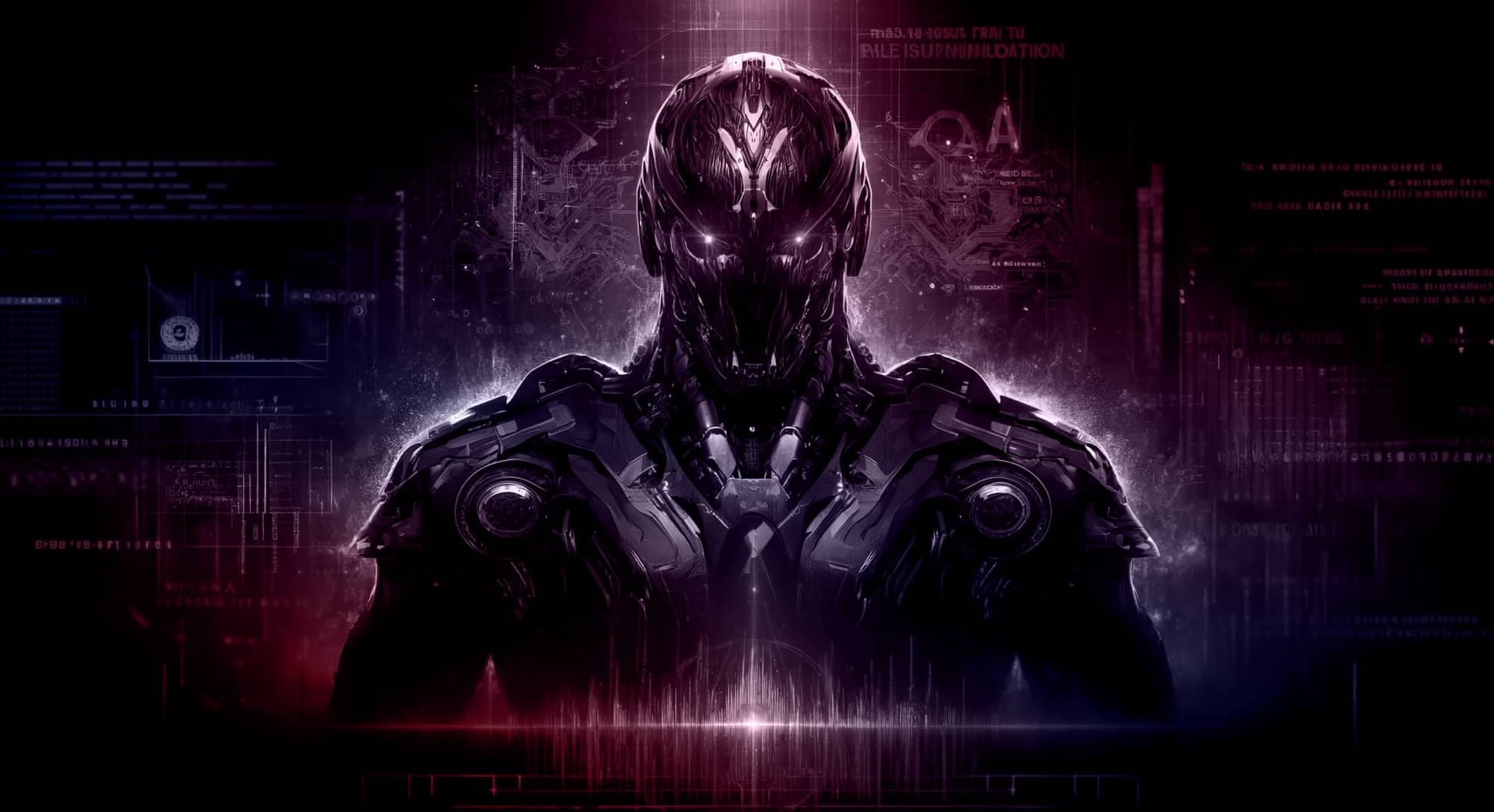
While AI offers tremendous benefits to the cybersecurity community, it also provides malicious actors with tools to enhance their capabilities. With Dark AI, cyber threat actors are able to use AI to conduct faster, more sophisticated attacks.
These AI-enhanced threats operate at machine speed and often go undetected, using legitimate tools and valid credentials to blend in with normal enterprise activities. This new level of stealth and speed in cyberattacks makes traditional security measures less effective as they struggle to detect and prevent these attacks.
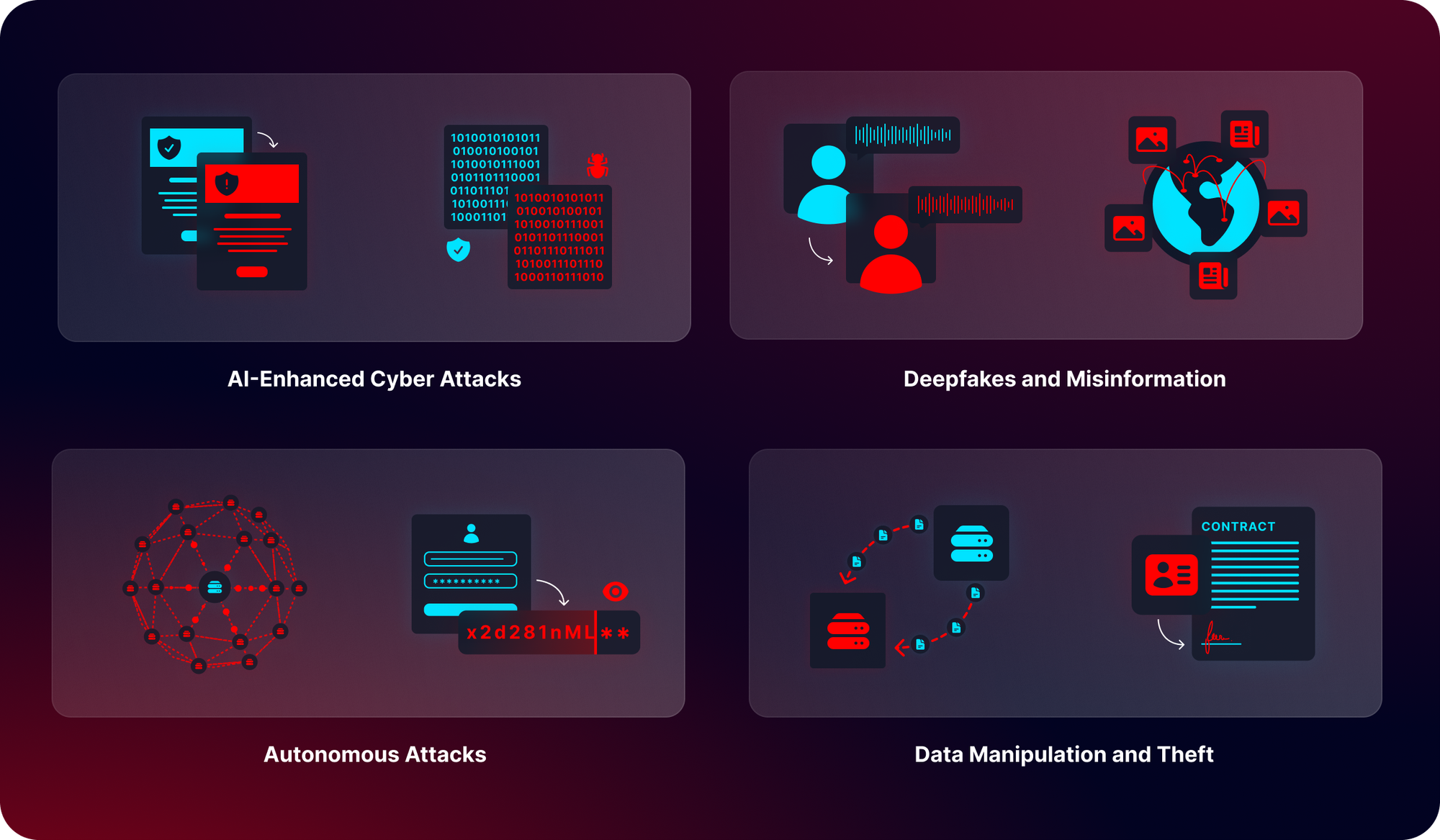
AI-Enhanced Cyber Attacks
- Phishing and Social Engineering: Using AI to create highly convincing phishing emails and social engineering tactics. AI can analyze large datasets to personalize attacks, making them more effective.
- Polymorphic Malware: AI-driven malware that can learn from its environment, adapt and modify itself to avoid detection by traditional security systems. Prominent examples include BlackMamba, DeepLocker and MalGAN.
Deepfakes and Misinformation
- Deepfake Technology: Creating realistic but fake audio, video, and images using AI. This technology can be used to spread false information, manipulate public opinion, and damage reputations.
- Automated Fake News: Using AI to generate and distribute fake news stories at scale. AI can analyze trending topics and create content that appears legitimate to spread misinformation quickly.
Autonomous Attacks
- Botnets and DDoS Attacks: An AI that can manage and control large networks of compromised devices (botnets) to conduct Distributed Denial of Service (DDoS) attacks. The AI improves the coordination and impact of these attacks.
- Automated Hacking: AI-driven tools can autonomously identify and exploit vulnerabilities in systems, networks, and applications. These tools can perform tasks such as password cracking, vulnerability scanning, and unauthorized access without human intervention.
Data Manipulation and Theft
- AI in Data Breaches: AI can be used to sift through stolen data and extract valuable information more efficiently. It can also help identify the most lucrative targets for data theft.
- Synthetic Identity Fraud: Creating synthetic identities by combining real and fake information using AI. These identities can be used for fraudulent activities, including financial scams and identity theft.
Addressing the challenges posed by Dark AI requires a multi-faceted approach, including advanced detection technologies, regulatory measures, and public awareness initiatives. The need for advanced AI-driven detection and analysis has never been greater.
Challenges & Future Trends
Despite its benefits, AI in cybersecurity is not without its challenges. One significant limitation is the potential for adversaries to target AI algorithms. Hackers can exploit vulnerabilities in AI systems, manipulate data, and even create adversarial attacks that fool AI models. In addition, implementing AI requires significant resources and expertise, which can be a barrier for smaller organizations. Ensuring the reliability and accuracy of AI systems is another critical challenge, as false positives can lead to unnecessary disruptions.
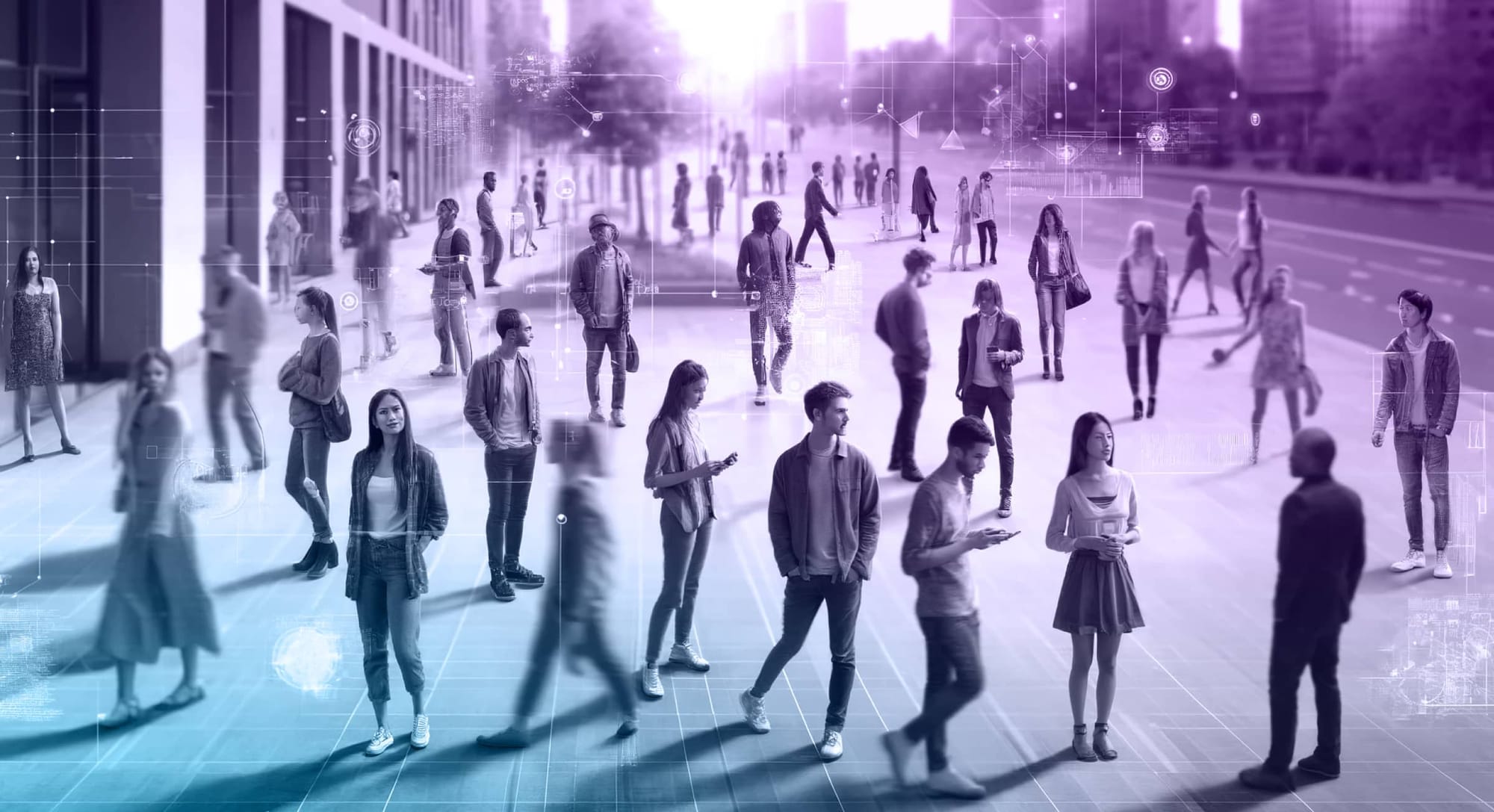
The use of AI in cybersecurity also raises important ethical and privacy concerns. While AI can enhance security, it can also lead to invasive surveillance and privacy issues. Organizations must balance the need for security with respect for user privacy, and ensure that AI technologies are used responsibly. Transparent policies and robust data governance frameworks are essential to maintain public trust.
Looking ahead, AI is poised to revolutionize the cybersecurity landscape. Future trends include the integration of AI with other emerging technologies, such as blockchain and quantum computing, to create more robust security frameworks. AI-driven threat intelligence platforms will proliferate, providing real-time insights and automated responses to cyber threats. The development of explainable AI will also address transparency issues, making AI decisions more understandable and trustworthy.
Conclusion
In summary, AI is transforming cybersecurity by improving threat detection capabilities, automating response actions, and providing predictive analytics. While there are challenges, the benefits of AI overwhelmingly outweigh the drawbacks, solidifying its role as a critical tool in the fight against cybercrime. Organizations must invest in AI technologies and keep up with new trends to stay ahead of evolving threats.
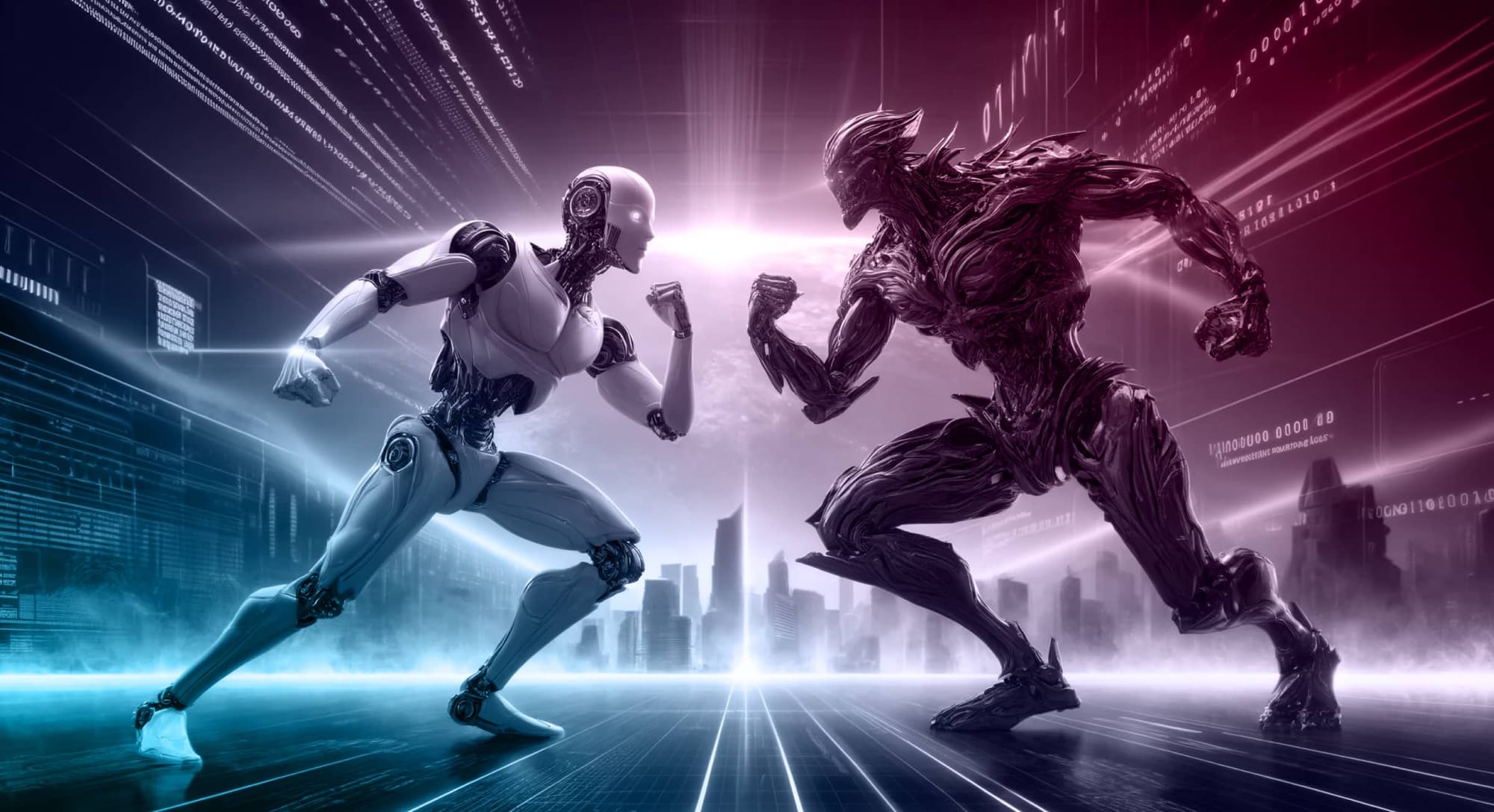
The cat-and-mouse game continues, but at a much faster pace. The key to success is having the latest technologies and tools. But also the expertise to use them effectively.
Contact us to learn more about our AI-driven cybersecurity solutions and services.
About SIROC
SIROC Group is home to several innovative companies across Europe that provide advanced technology solutions, advisory services and strategic execution enablement to many customers across the globe. Our expertise spans across a range of areas including AI-driven Cybersecurity, Secure Application Development, Cloud Infrastructure Management, Workflow Automation and Advanced Data Analytics.
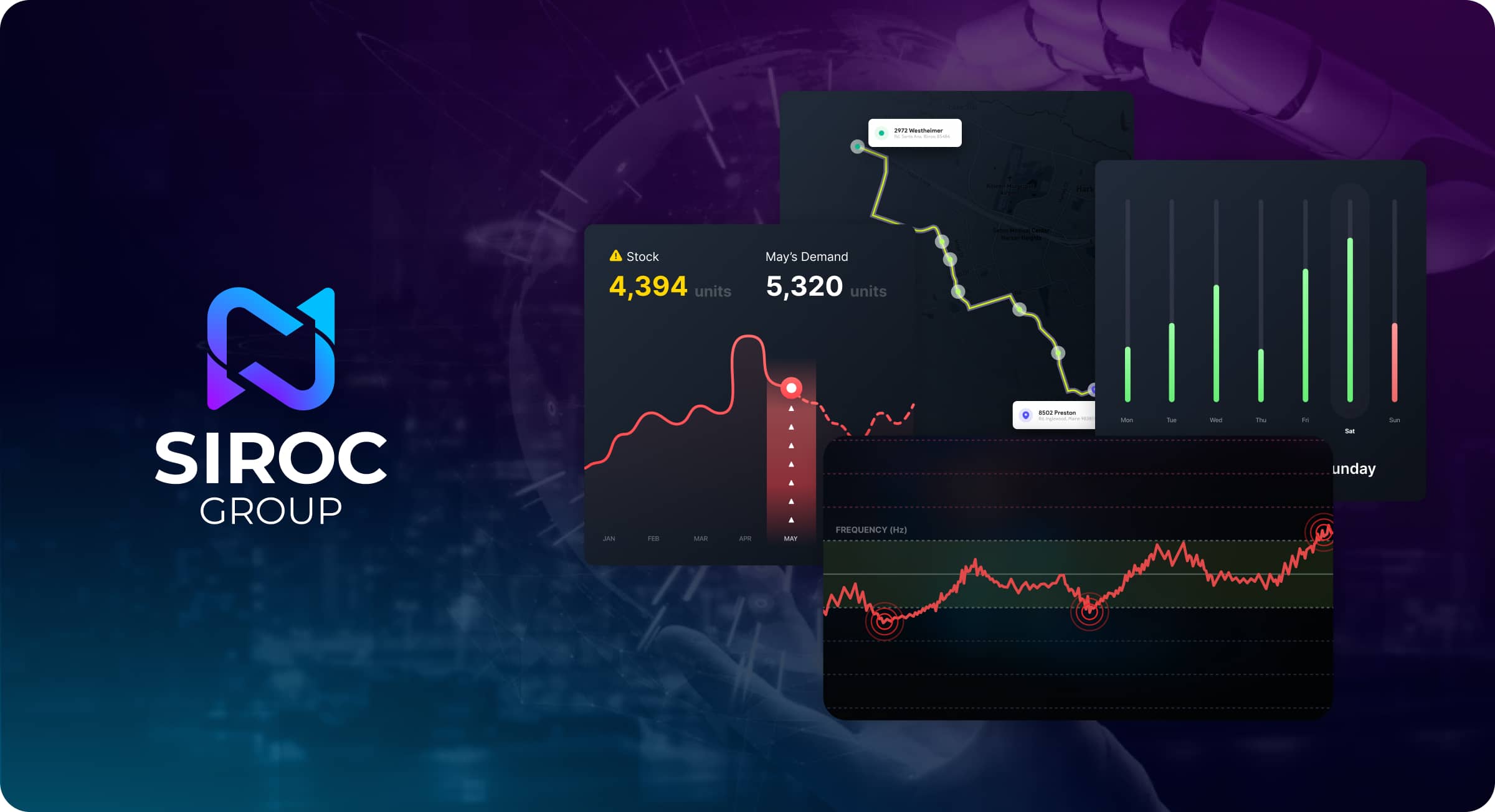
With a strong focus on effective execution, innovation and a commitment to quality, SIROC Group is at the forefront of industry trends and standard practices, and we welcome the opportunity to work with businesses looking to leverage the latest technology to drive growth, transformation and achieve their strategic objectives.
